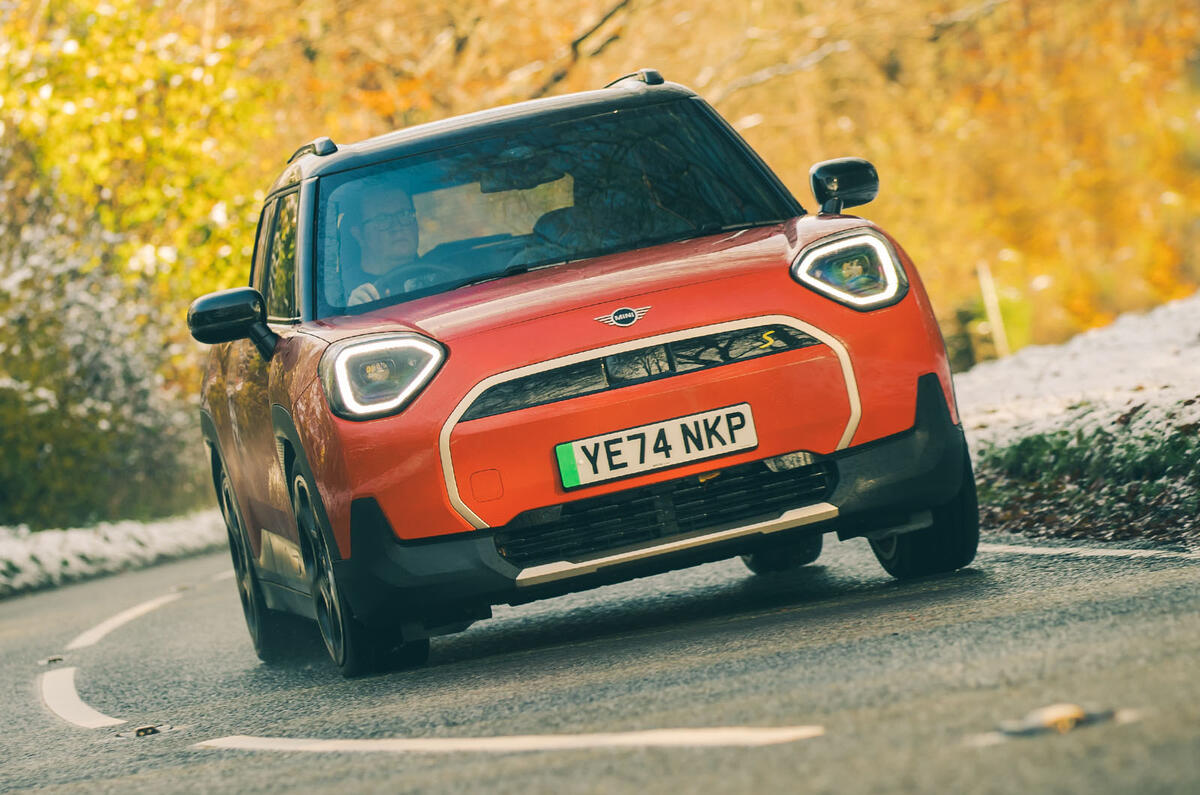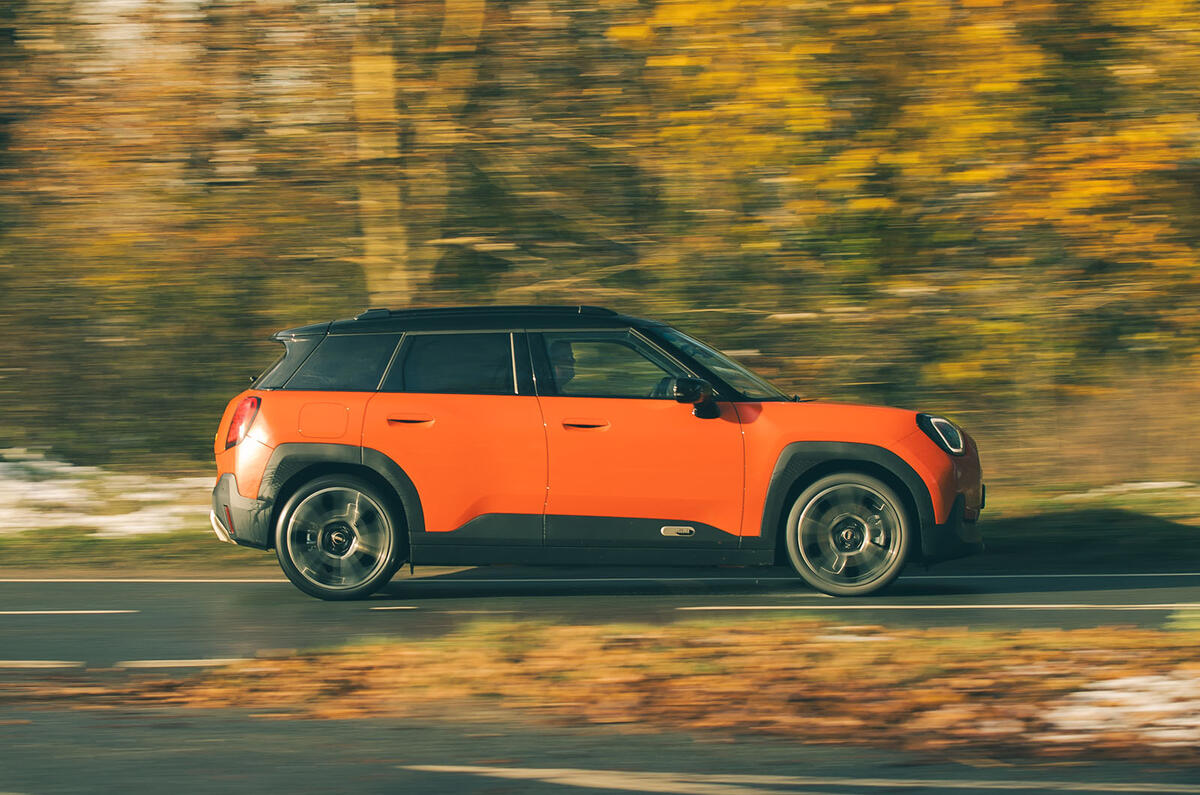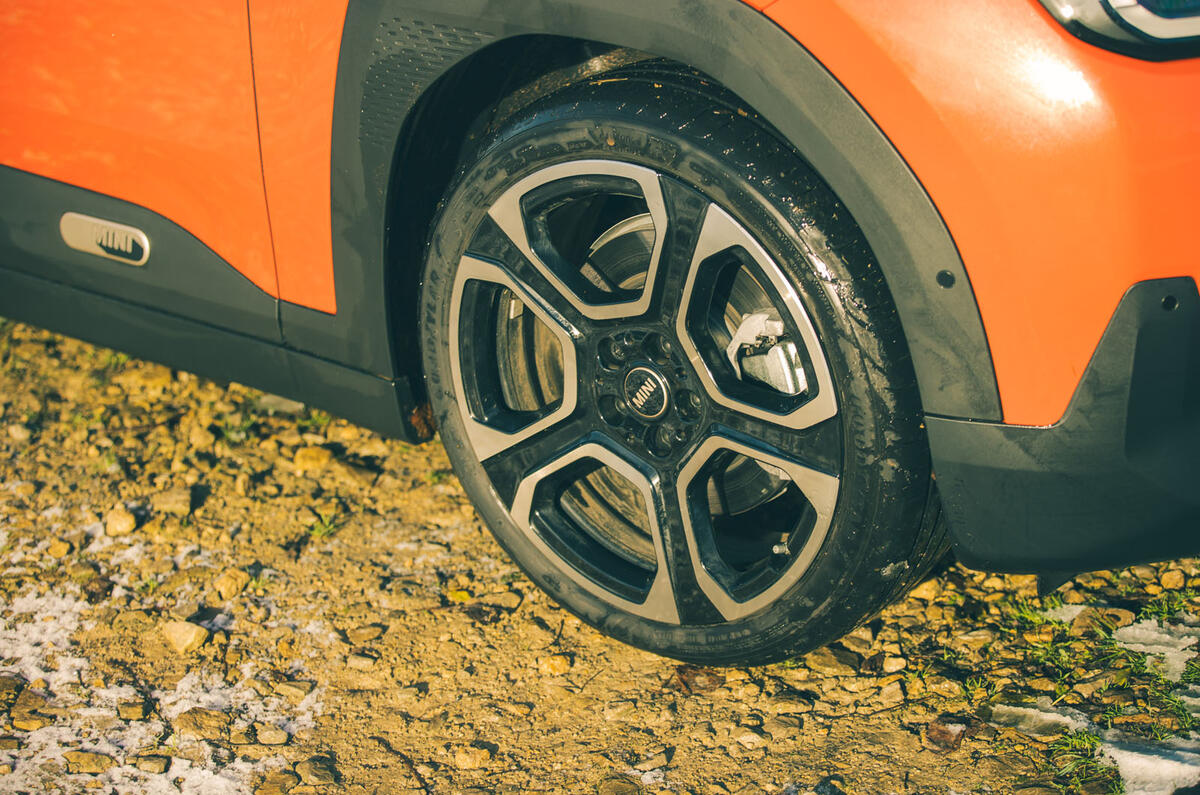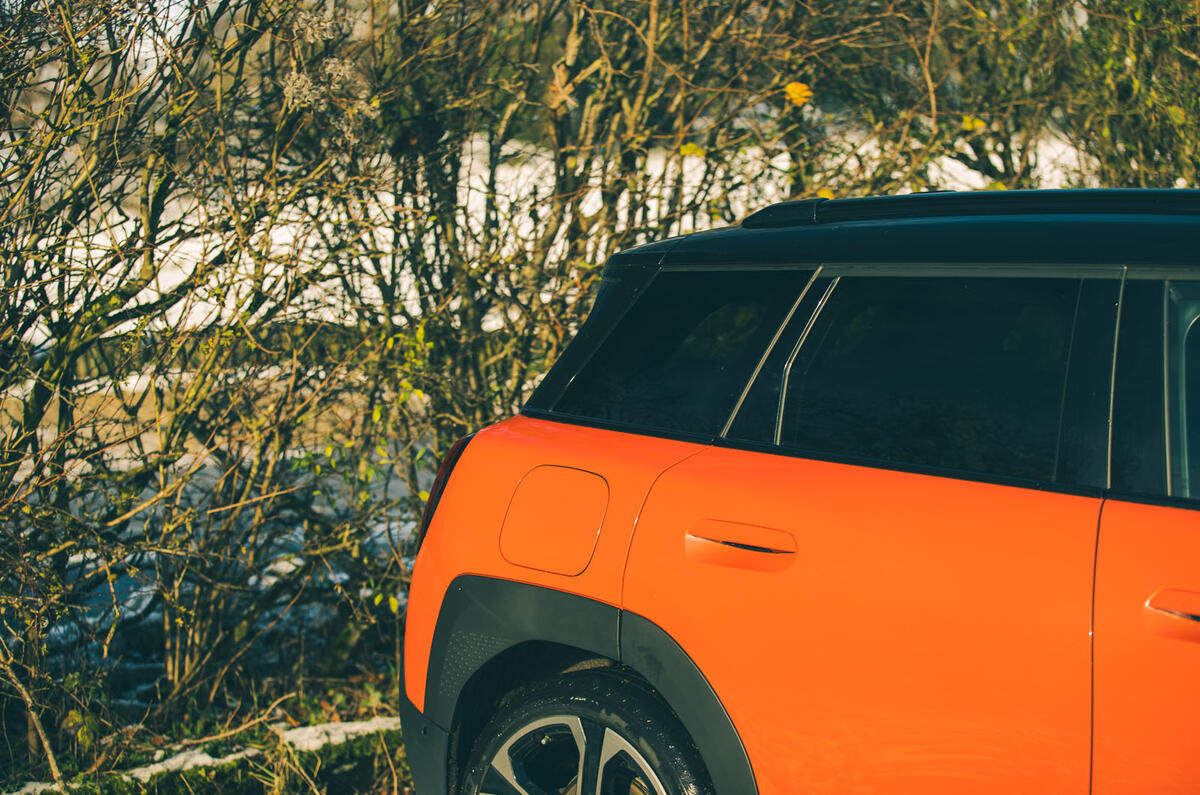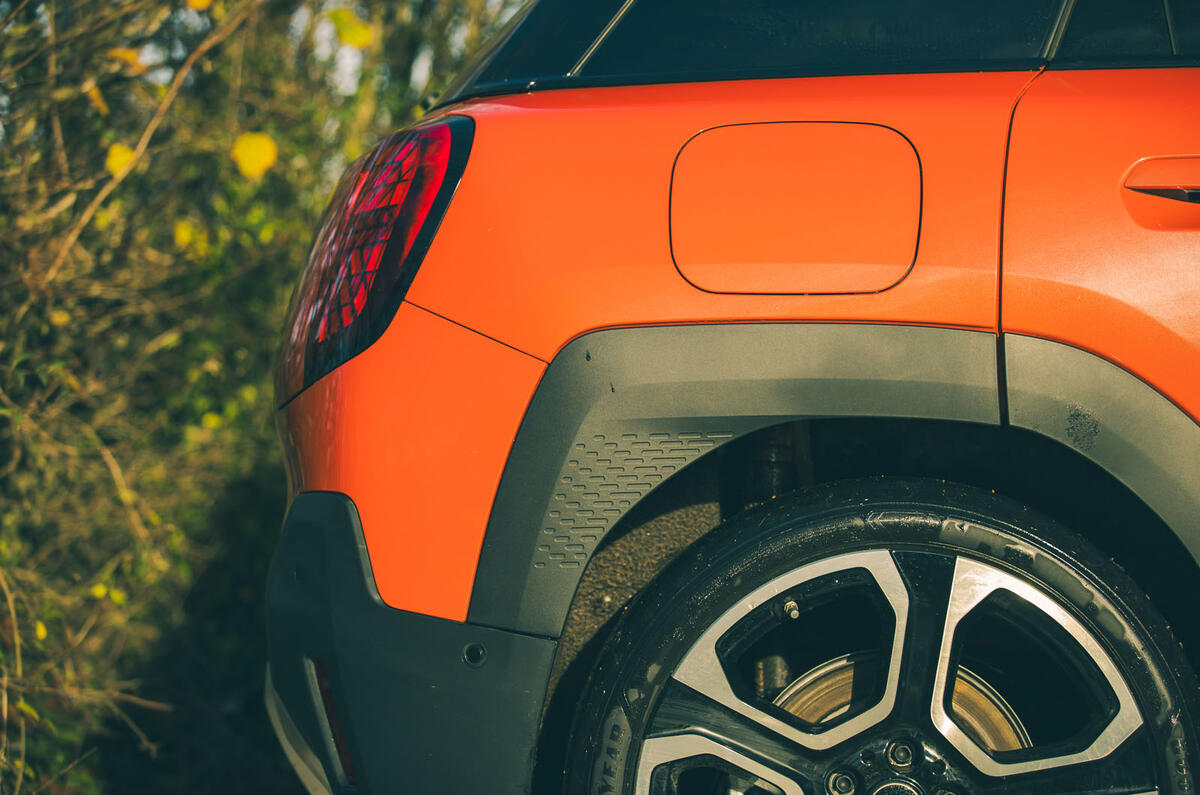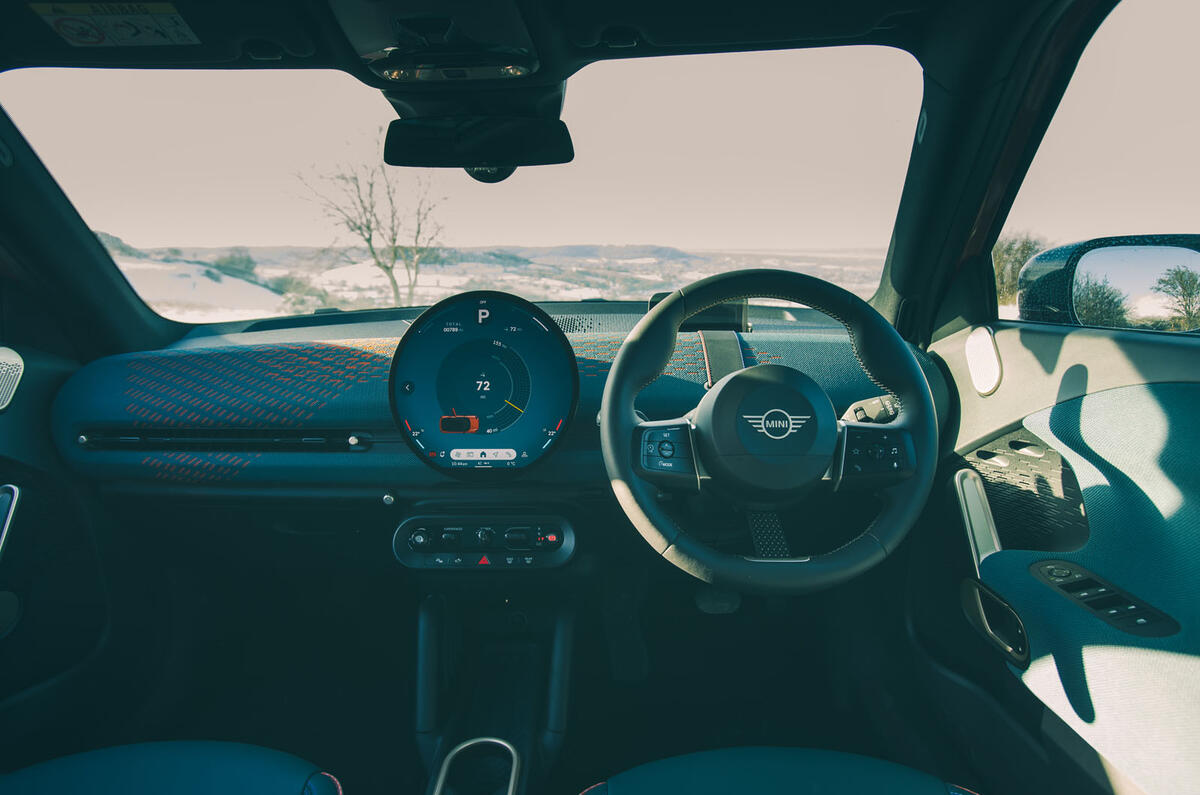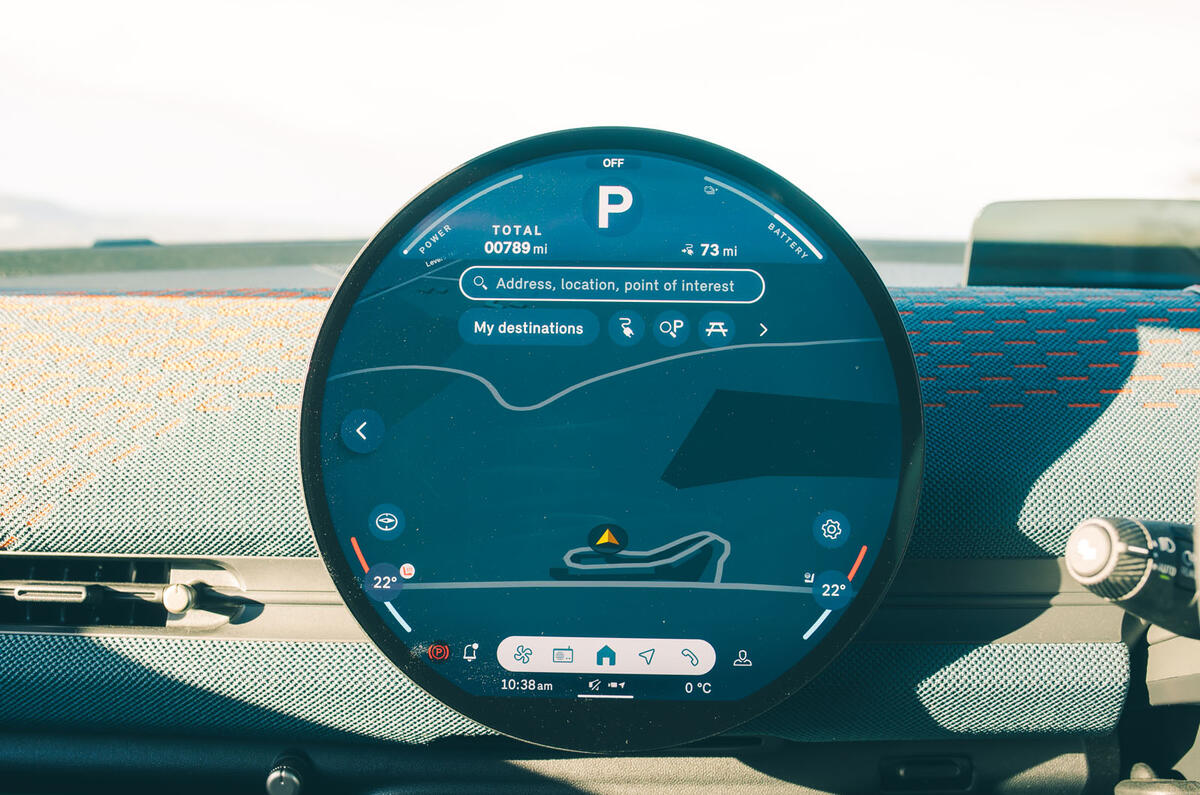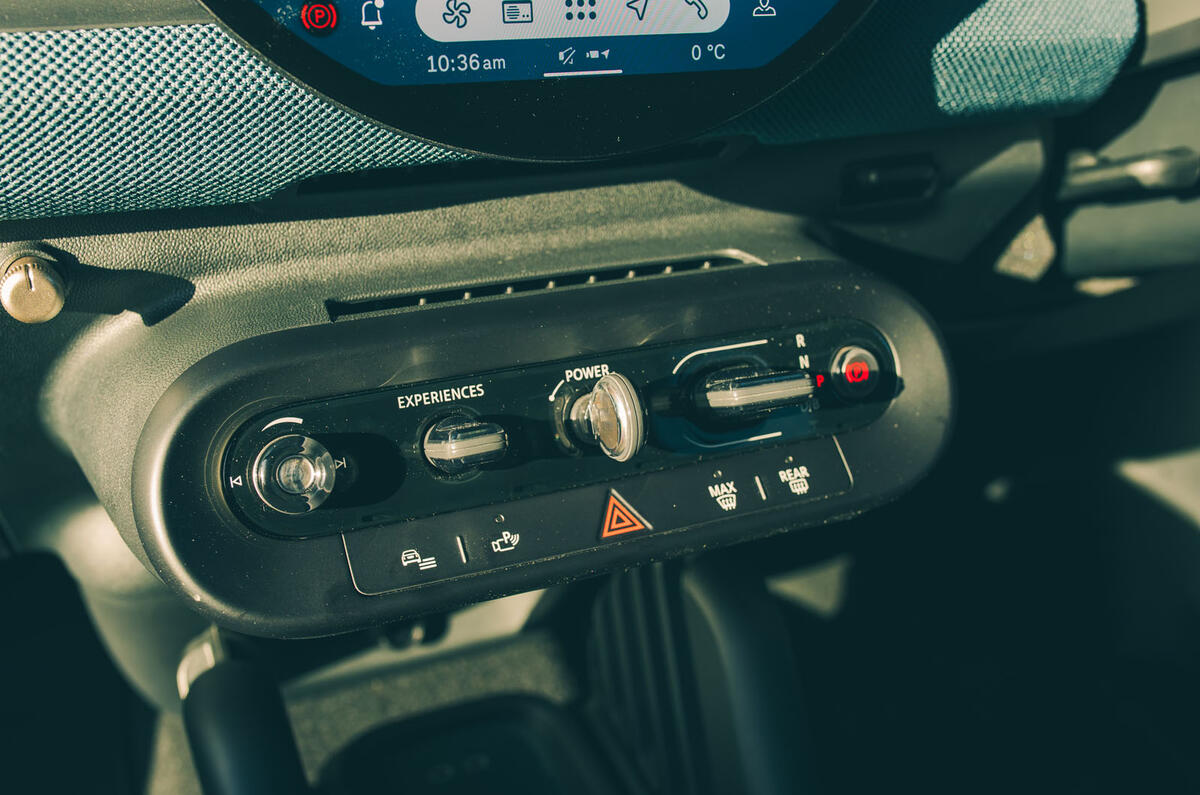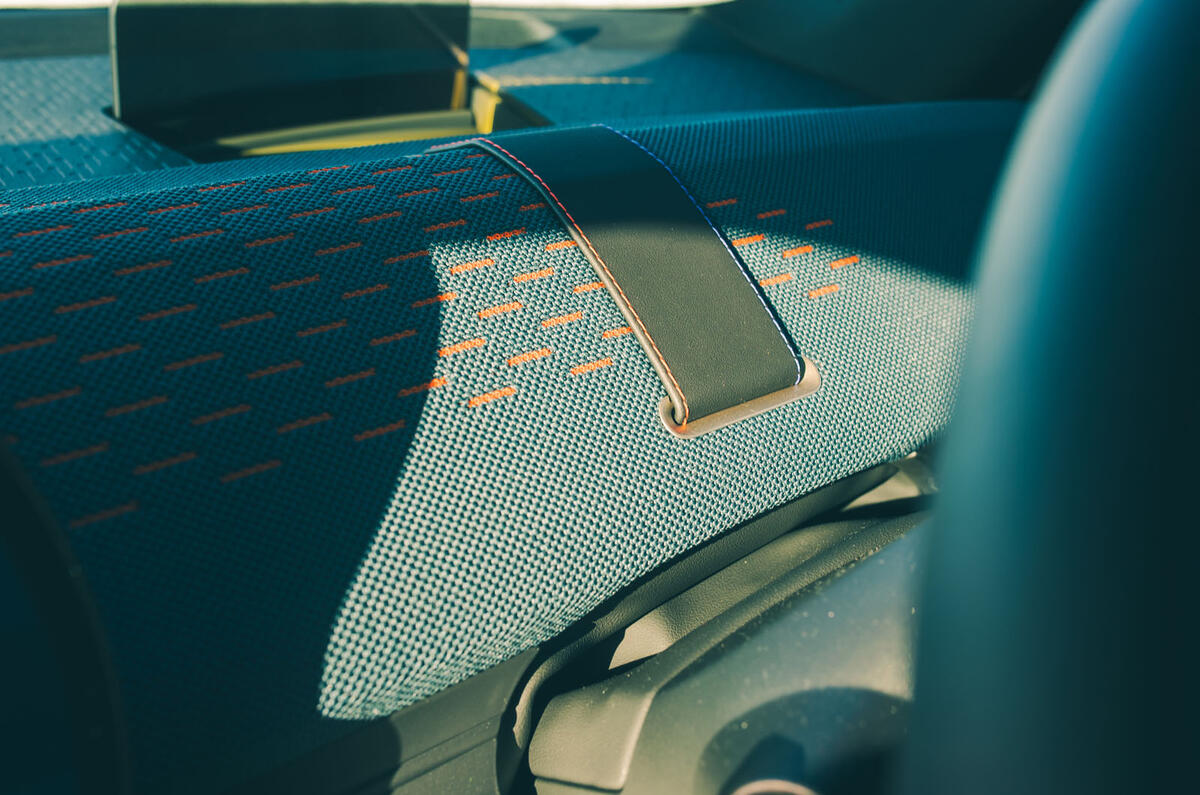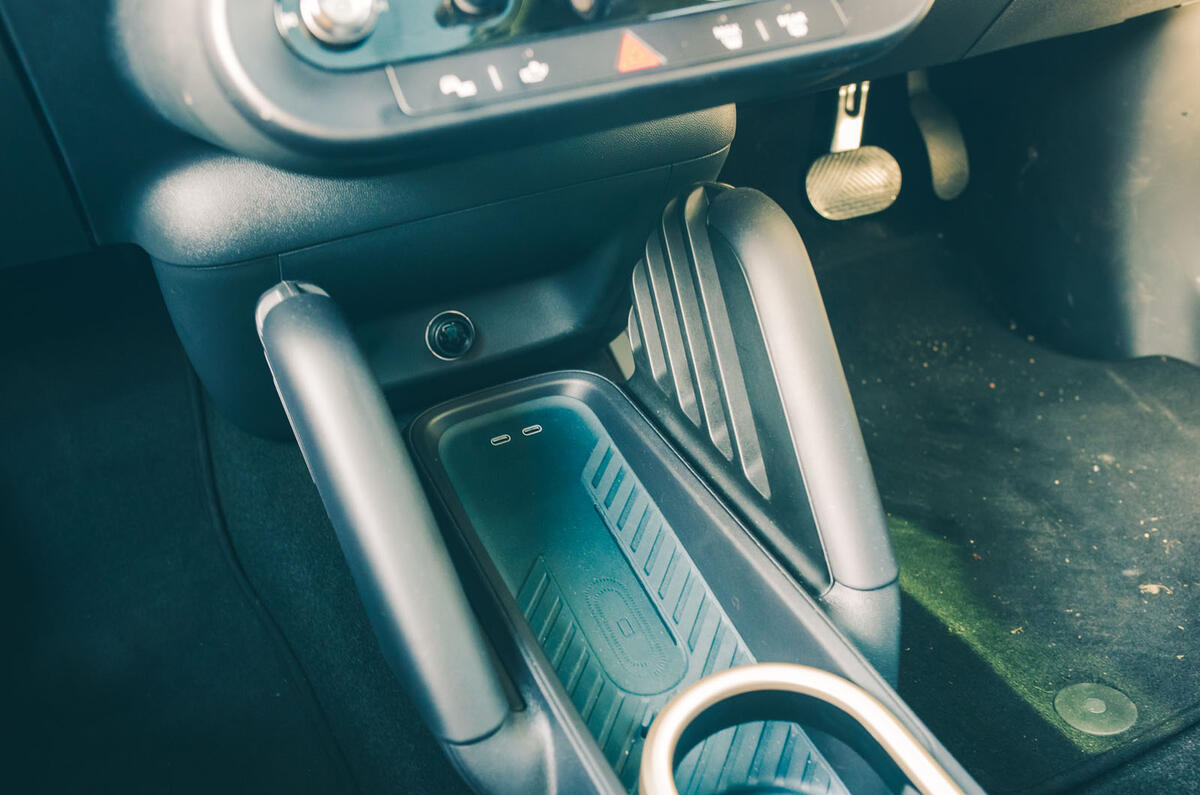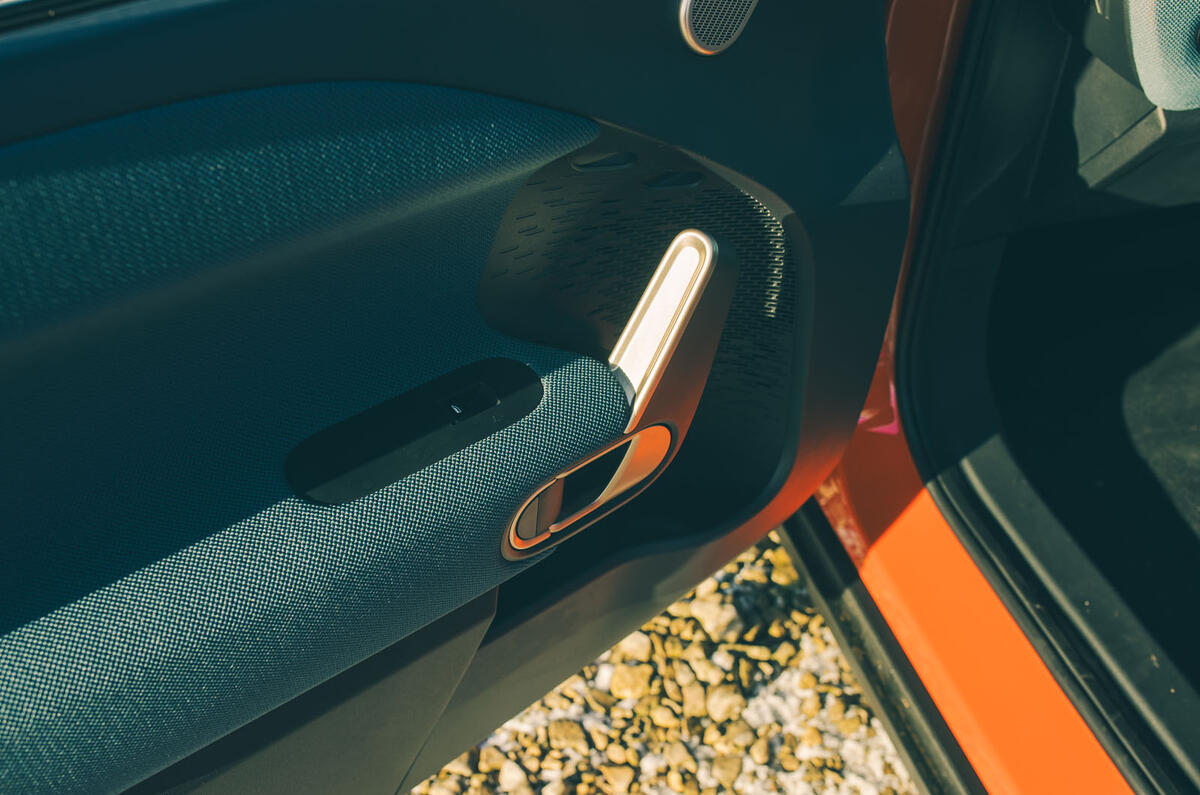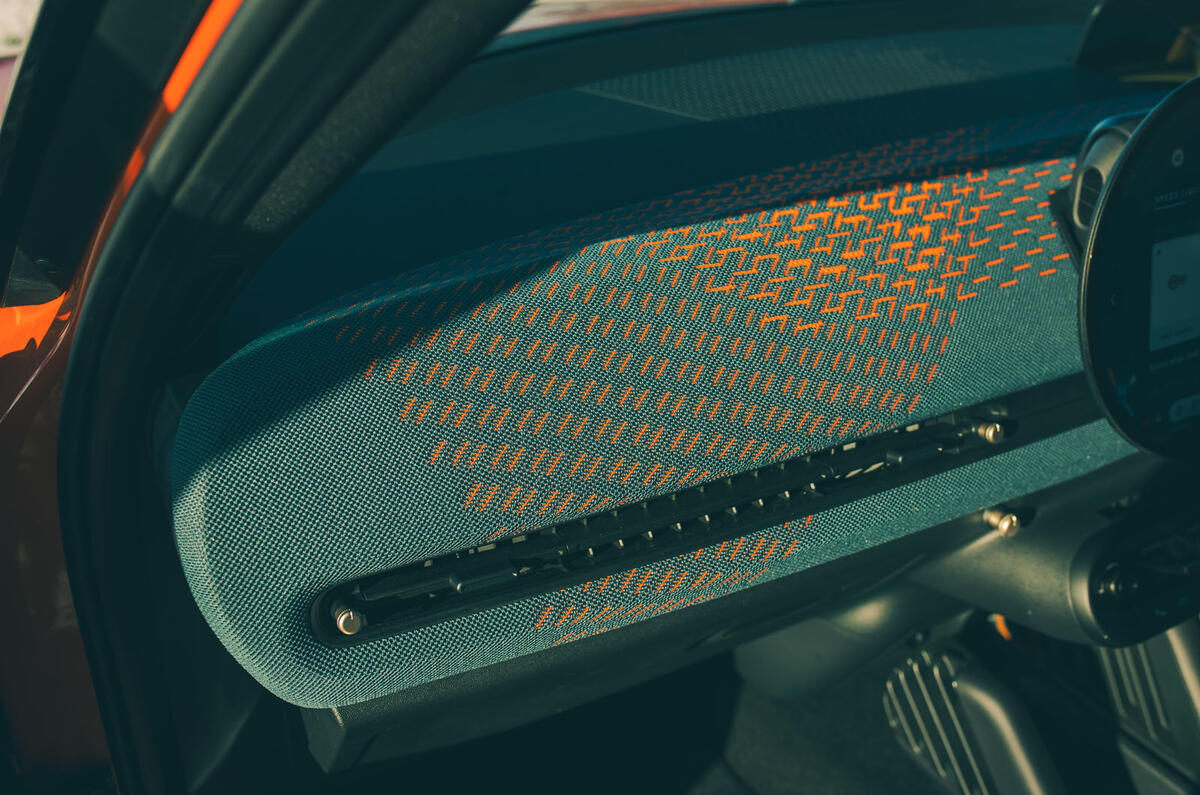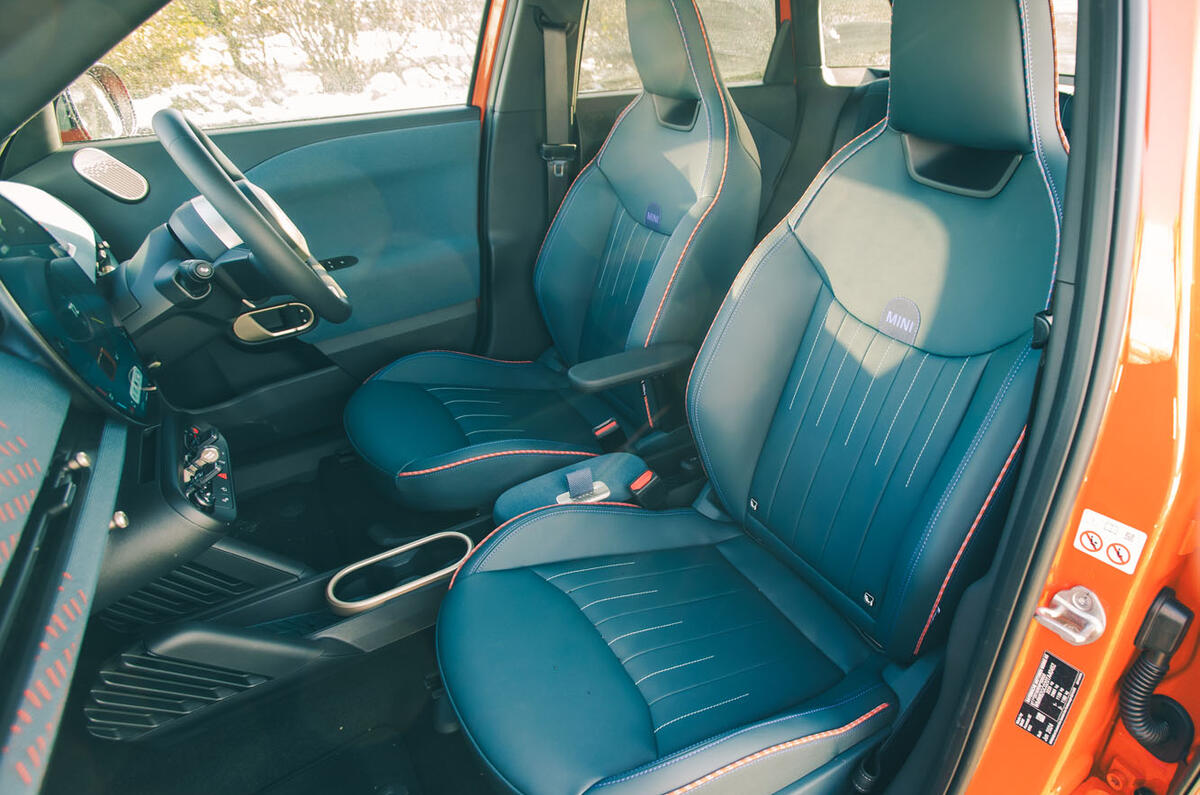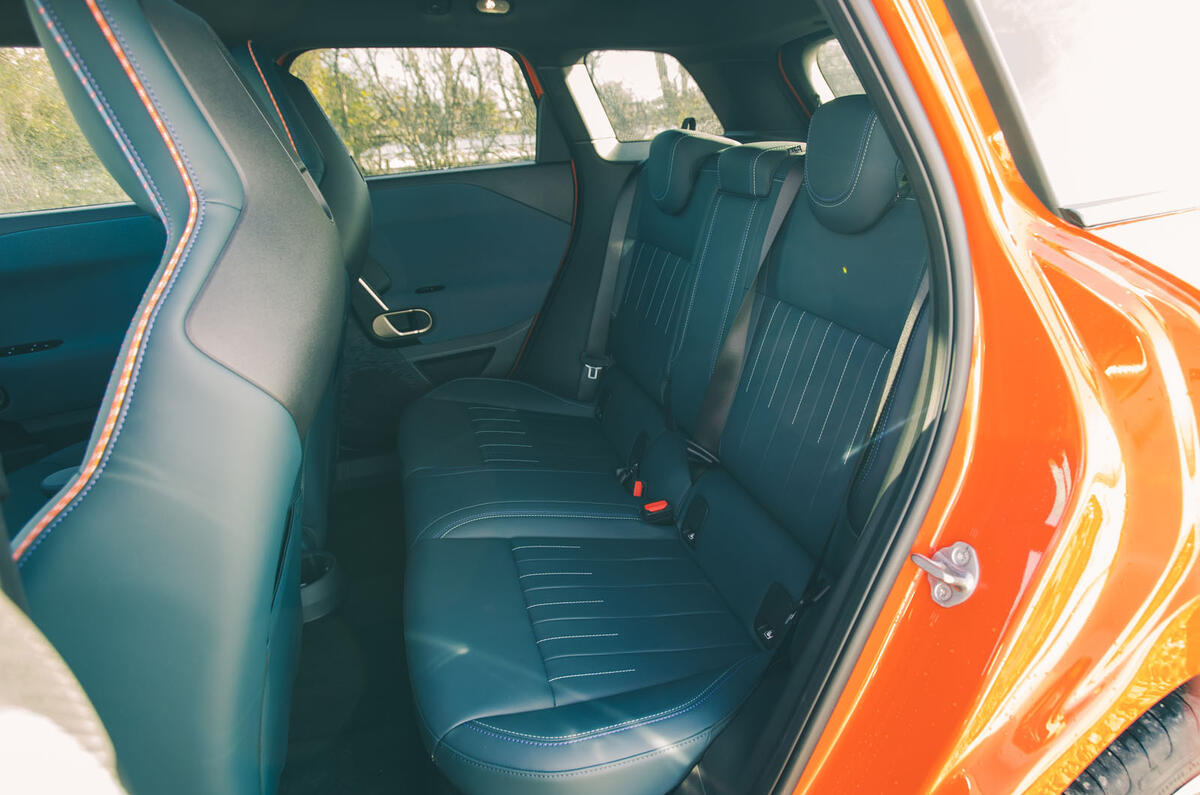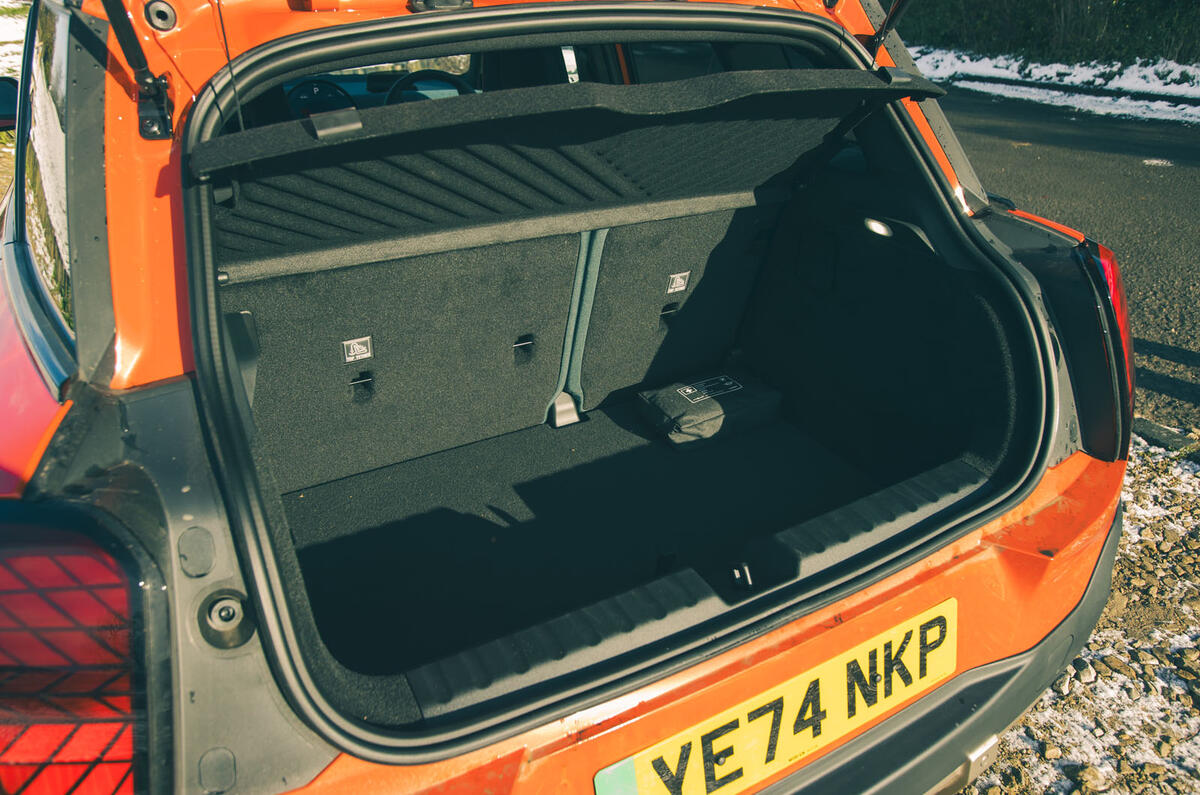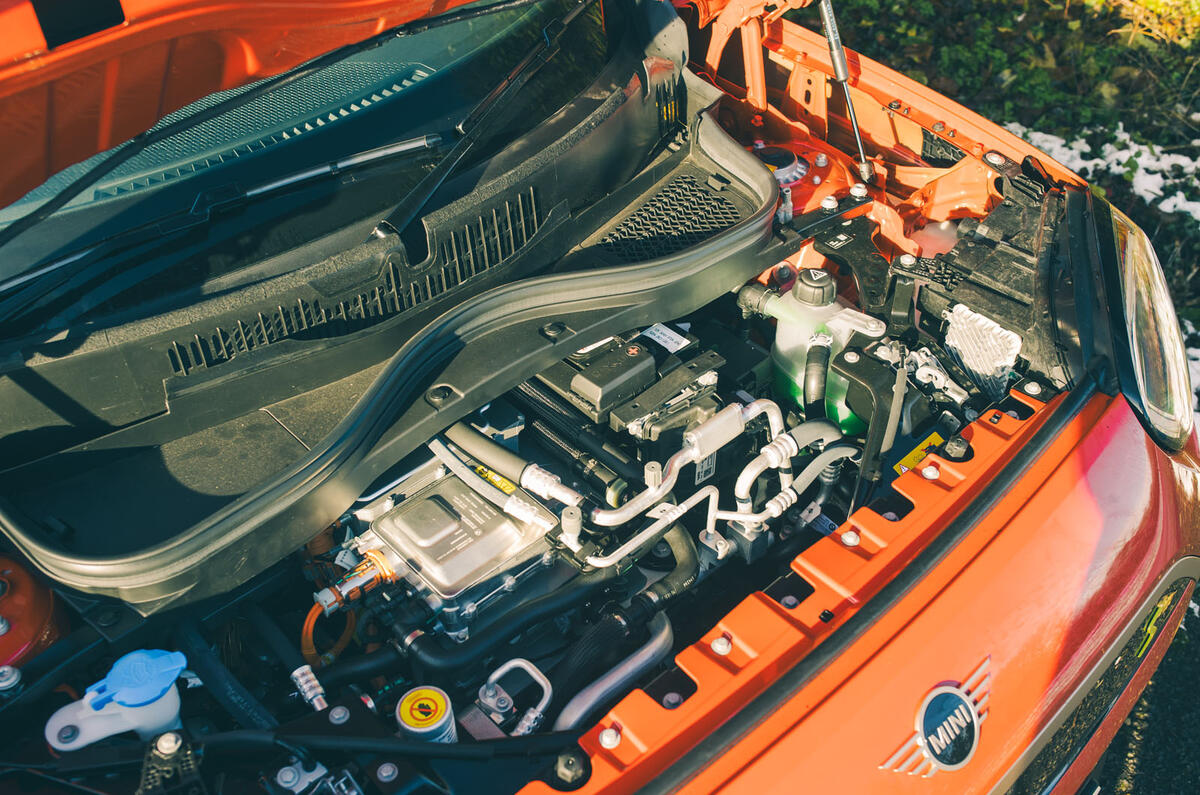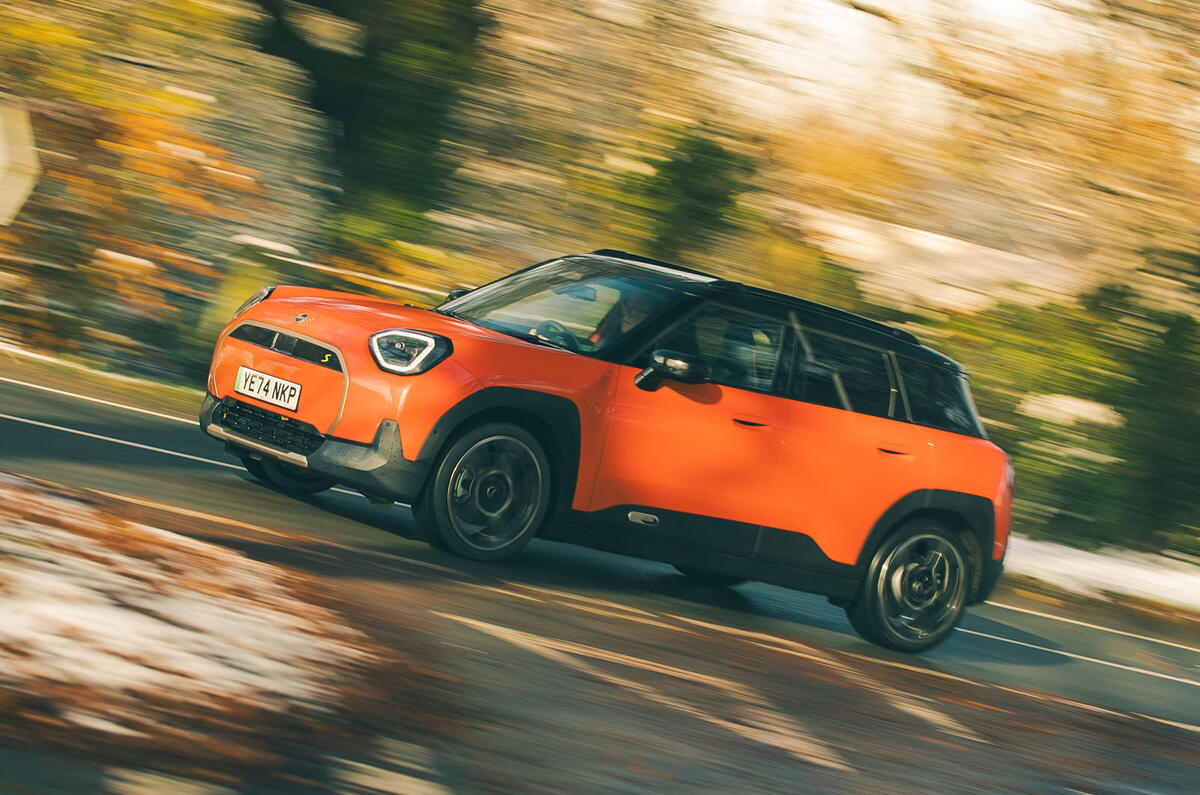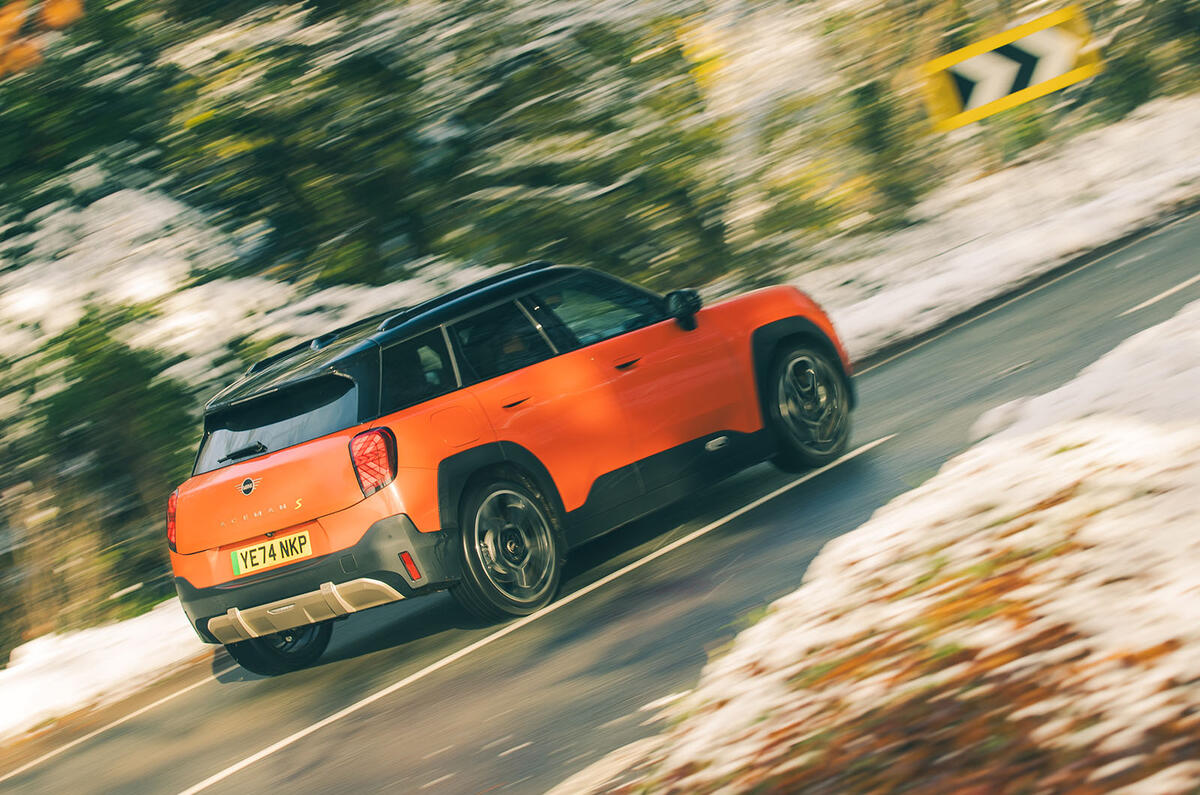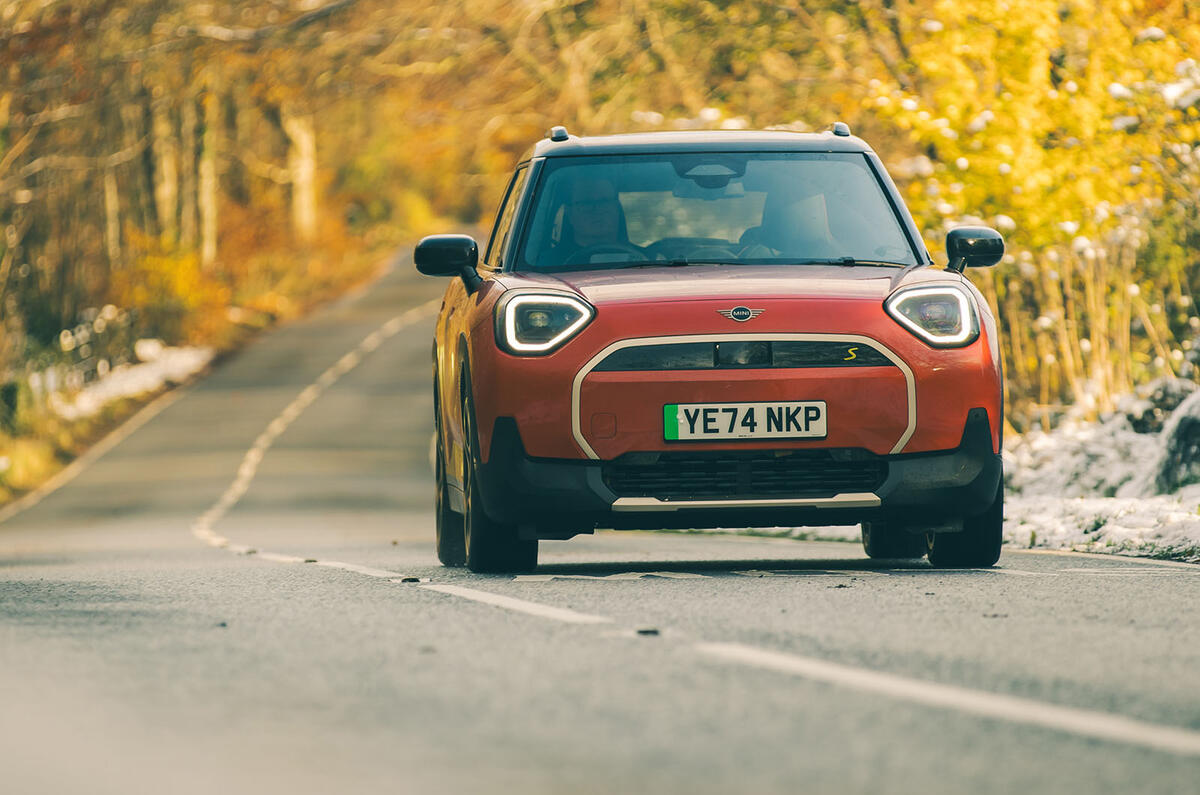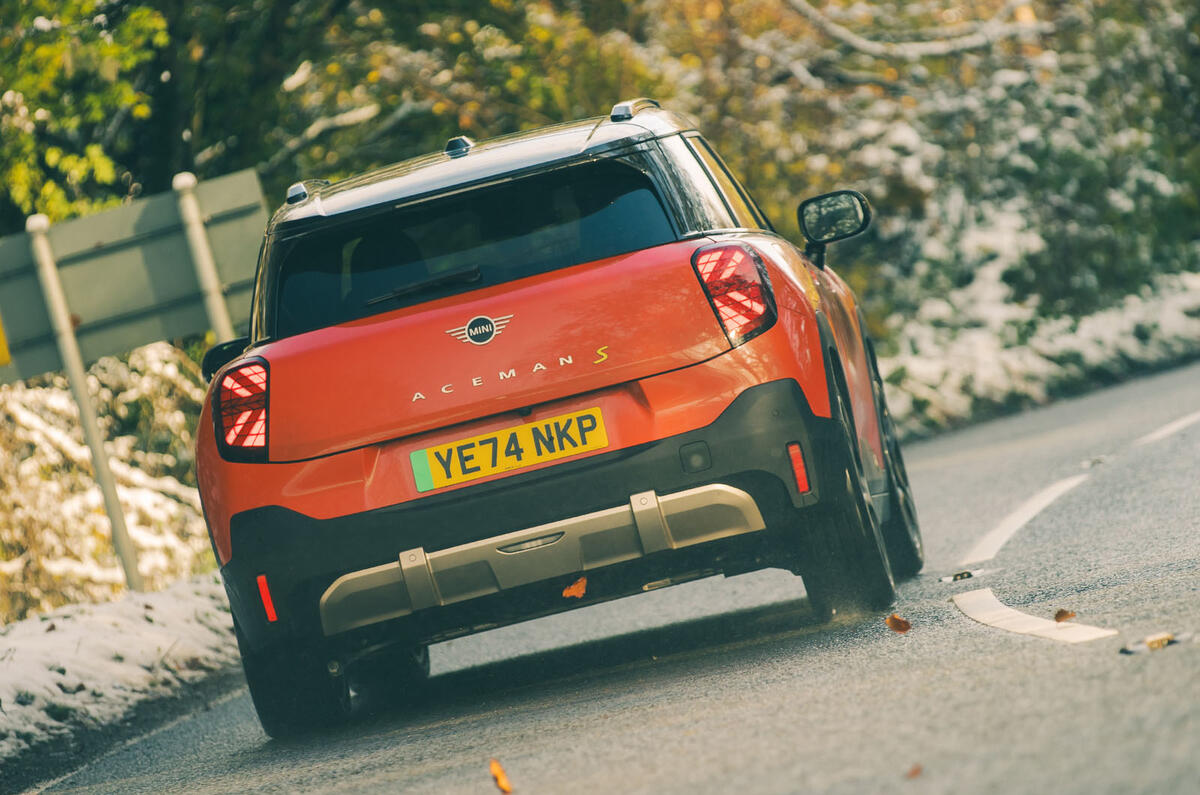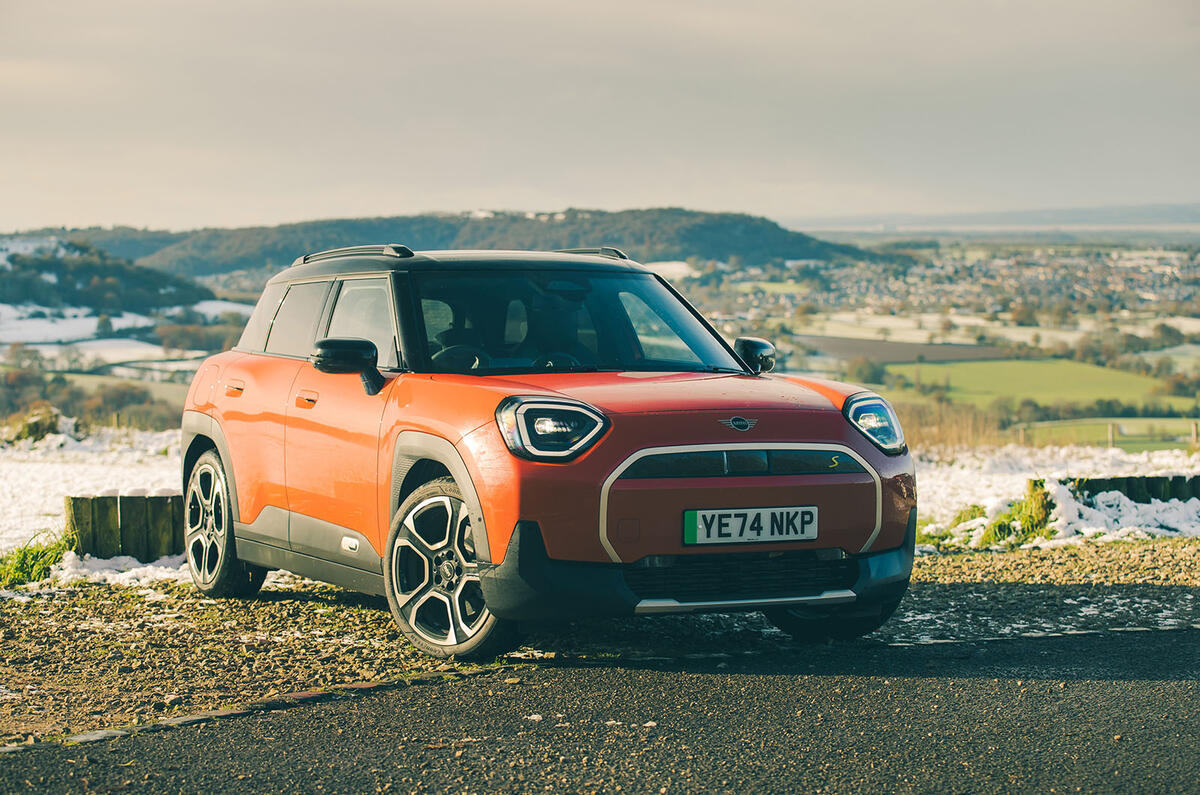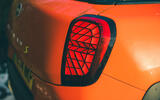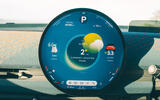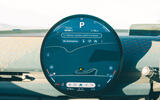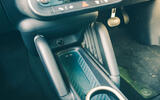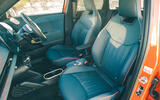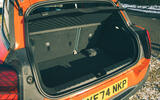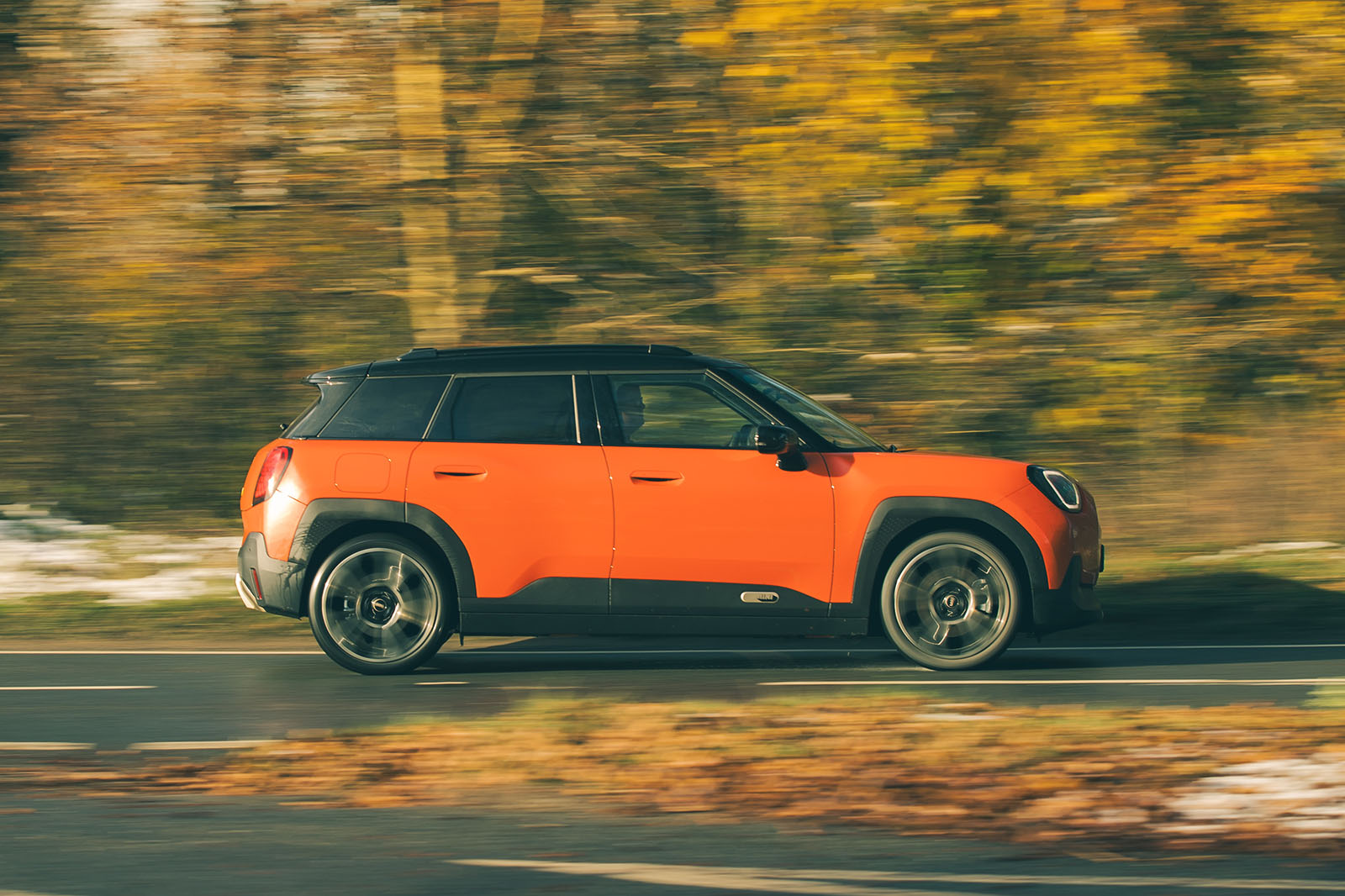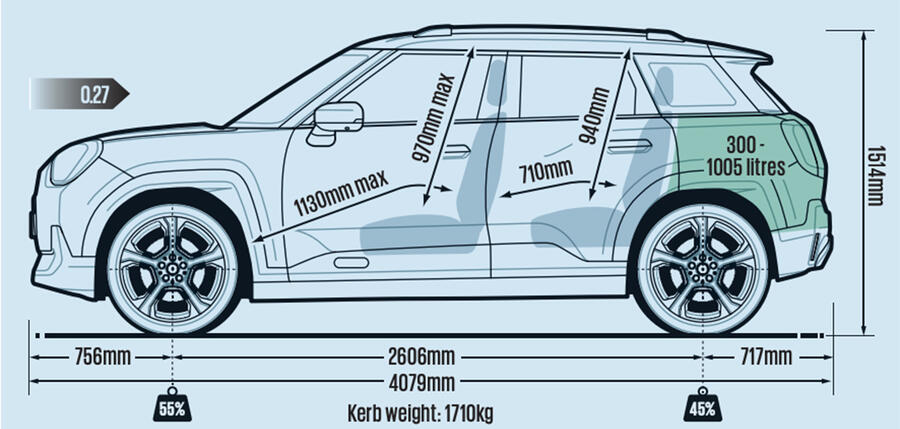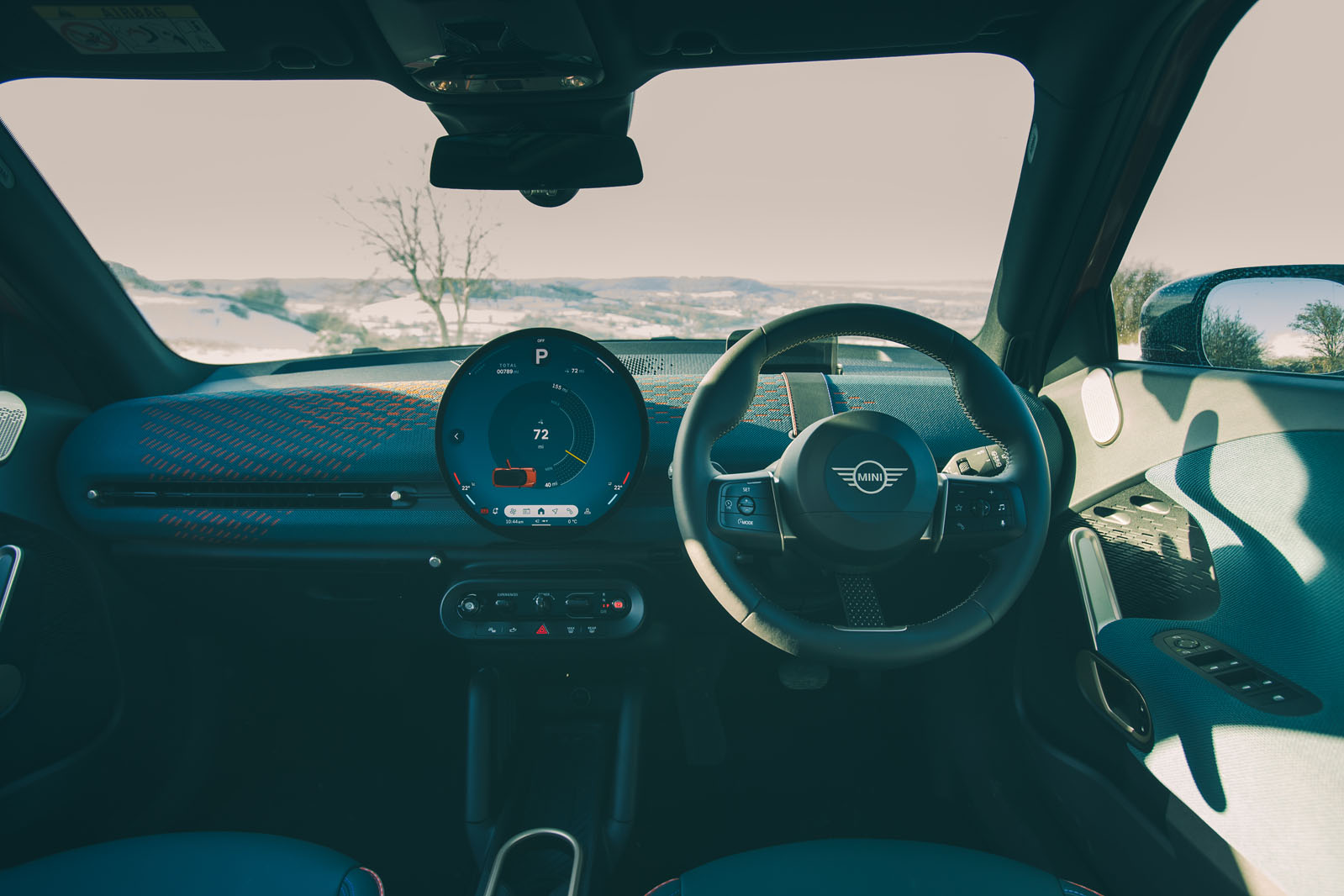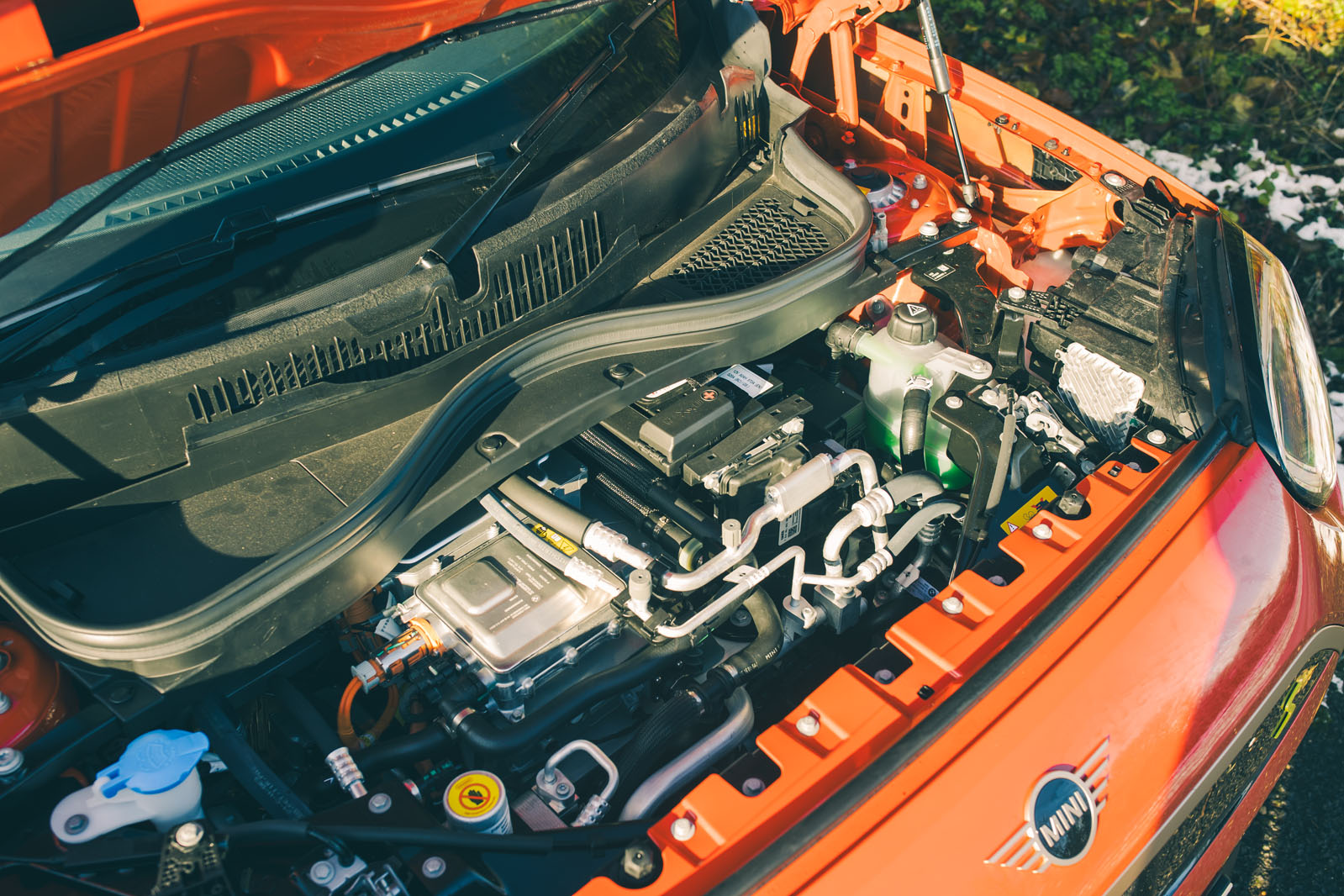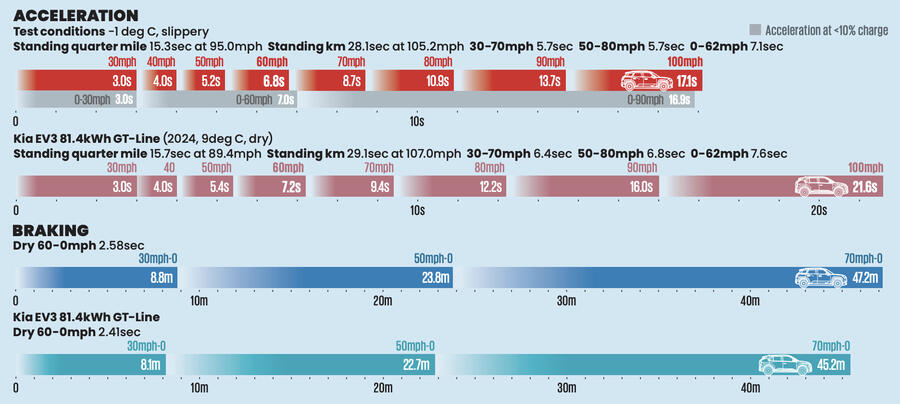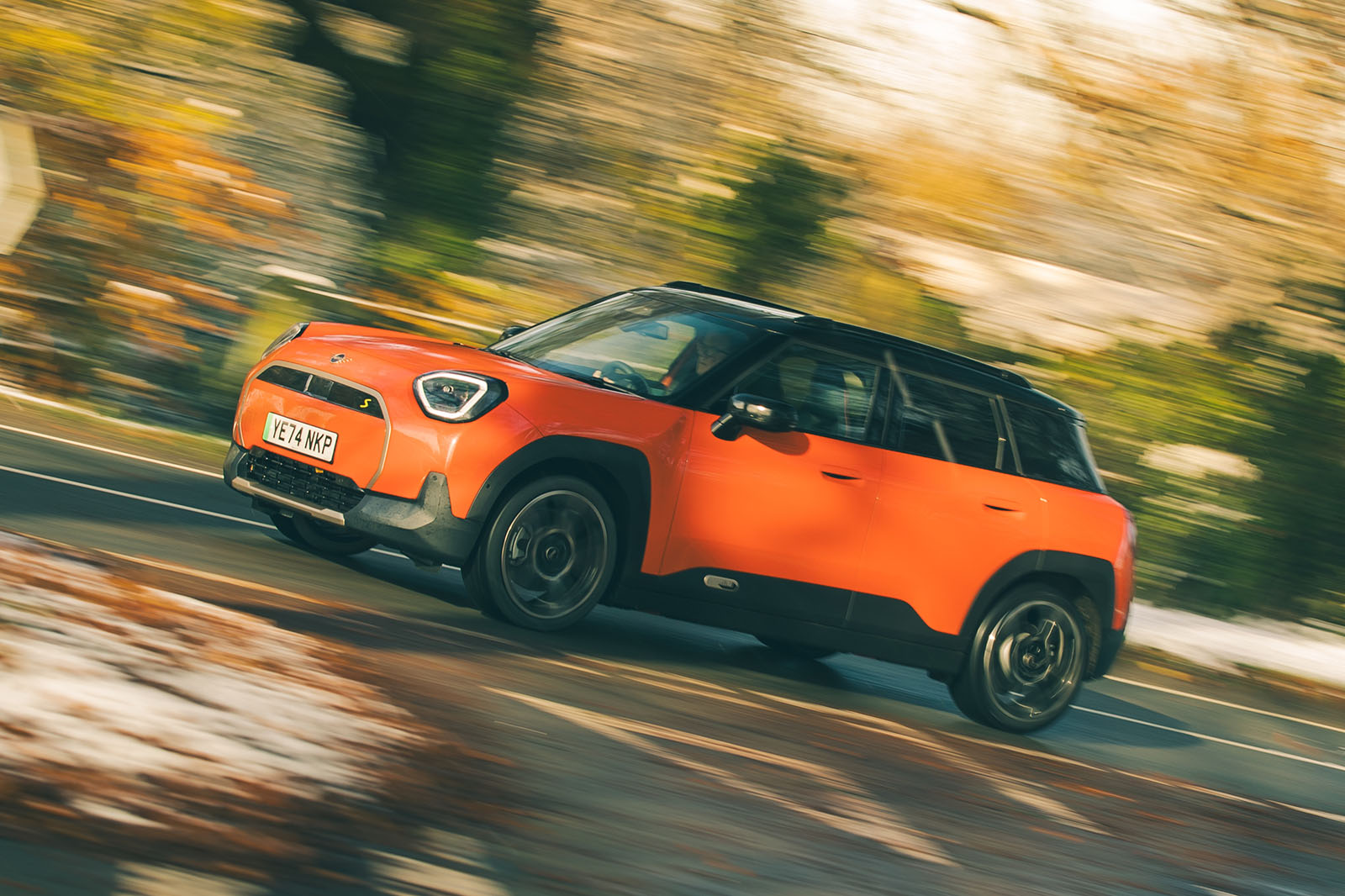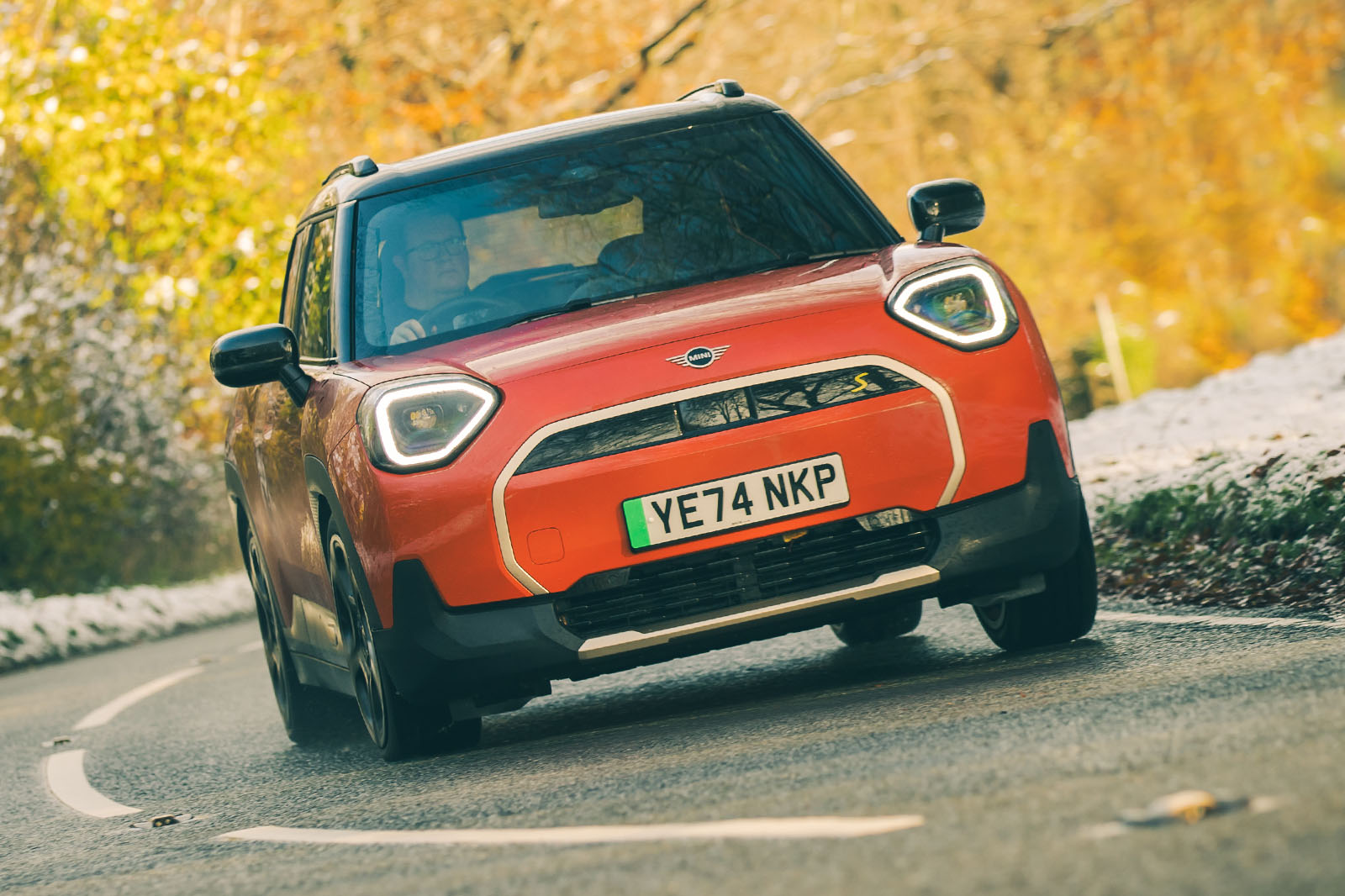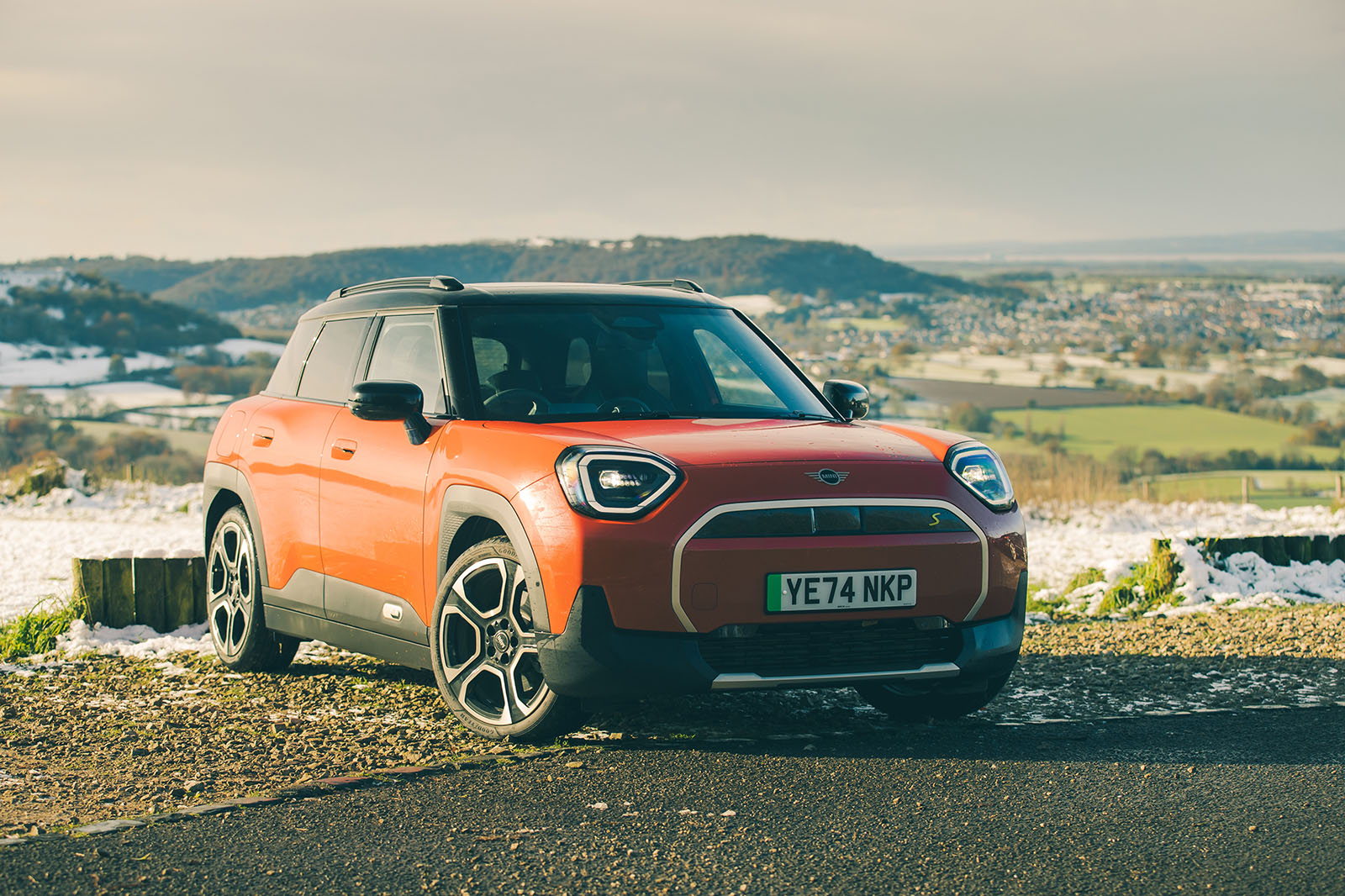So just how much bigger than a regular hatchback does this Cooper-derived modern ‘Maxi’ feel on the inside? In some ways, not much. Entry is via a driver’s door aperture that bigger adults are likely to consider snug. With the seat slid back far enough to make room for longer legs, you will find the B-pillar suddenly in your way as you squeeze in and out, and the roofline close enough to clout your head on if you’re careless.
The hip point and driving position do feel that bit higher than the tea tray-like Cooper’s, of course, though still far from high in general terms. And the fascia is a familiar one. The textile dashboard covering and airy feel are quite lounge-like, and the ‘designer’ neatness of the layout is delivered alongside an apparent charm that’s alternative and appealing.
Few would mistake this for anything other than a premium interior; it’s just not a significantly different one than a Cooper SE has. The Aceman gets chunky free-standing interior door handles of its own, and a decorative leather strap in a different place to the one on a Cooper.
Meanwhile, the way the central, 240mm, side plate-sized OLED multimedia display doubles as an instrument screen and heating console won’t meet everyone’s approval (see ‘Multimedia’). Underneath it, Mini provides a rather tiddly transmission lever; a mostly superfluous faux engine start key (which you might wish wasn’t there the first time you forget to turn it without first having configured the car’s ADAS features, and then having to go back to square one); and some useful physical audio controls and menu shortcuts.
When it comes to practical touches, the centre storage console that runs all the way through to be accessible by rear-seat passengers is a neat idea, and the moulded plastic accessory docks on the front seatbacks, though ugly, are likely to be appreciated by those in the back.
The boot gets 300 litres of space, so will be fine for a lightweight buggy or a couple of cabin bags, and the seats fold in a 60/40 split if you need them to, but the Lexus LBX has usefully more space with its 400-litre boot, and the Kia EV3 (granted, also a chunkier car at 4.3m long but available at a similar price) is way roomier for passengers and luggage, not to mention has a longer driving range.
According to our tape measure, the car offers head room that’s just about class-competitive, but it lags behind a Smart #1, Cupra Born and Kia EV3 for rear leg room. It’s not as tight in the back as some B-SUVs (Volvo EX30, Jeep Avenger, Fiat 600e), and is probably practical enough – just – to feel like a step up from a Mini Cooper five-door.
But you still wouldn’t really want to be the adult who regularly had to travel in the back of one.
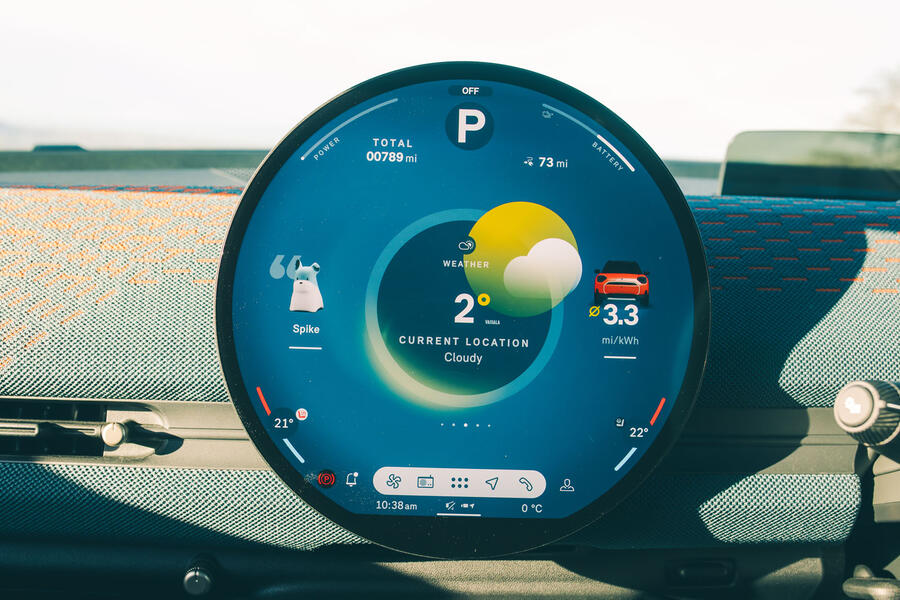
Multimedia
The Aceman’s 240mm circular multimedia system, the same as in both a Cooper and Countryman, sets it apart from other BMW Group relations. You navigate it similarly to how you might an equivalent in a BMW 1 Series or X1, though: without the help of a physical cursor controller, but aided by some useful shortcut keys and quick-access menus (the car’s ‘toolbelt’ user-customisable shortcut menu can be set to pop up when you press the star button on the steering wheel).
It’s important to set up a Mini Connected online user account before you do anything else, and then download it to the car (a two-minute process). Otherwise, you will have to reset everything – from the head-up display position, to your preferences for navigation mapping and ADAS settings – every time you start a journey, and the car’s voice recognition also won’t work. But once you have, the pre-flight rigmarole and general irksomeness of the tech is much reduced.
Without any cursor controller, the system is a bit more distracting to operate while driving than it might be, but it is by no means terrible on that score once you’re familiar with it. Mini’s insistence on making the central screen carry instrumentation as well as so much else does frequently draw your eyes further away from the road than necessary. The head-up display, which addresses that problem fairly well, should be standard on all models (it comes with the Level 1 option package on an Aceman E).




